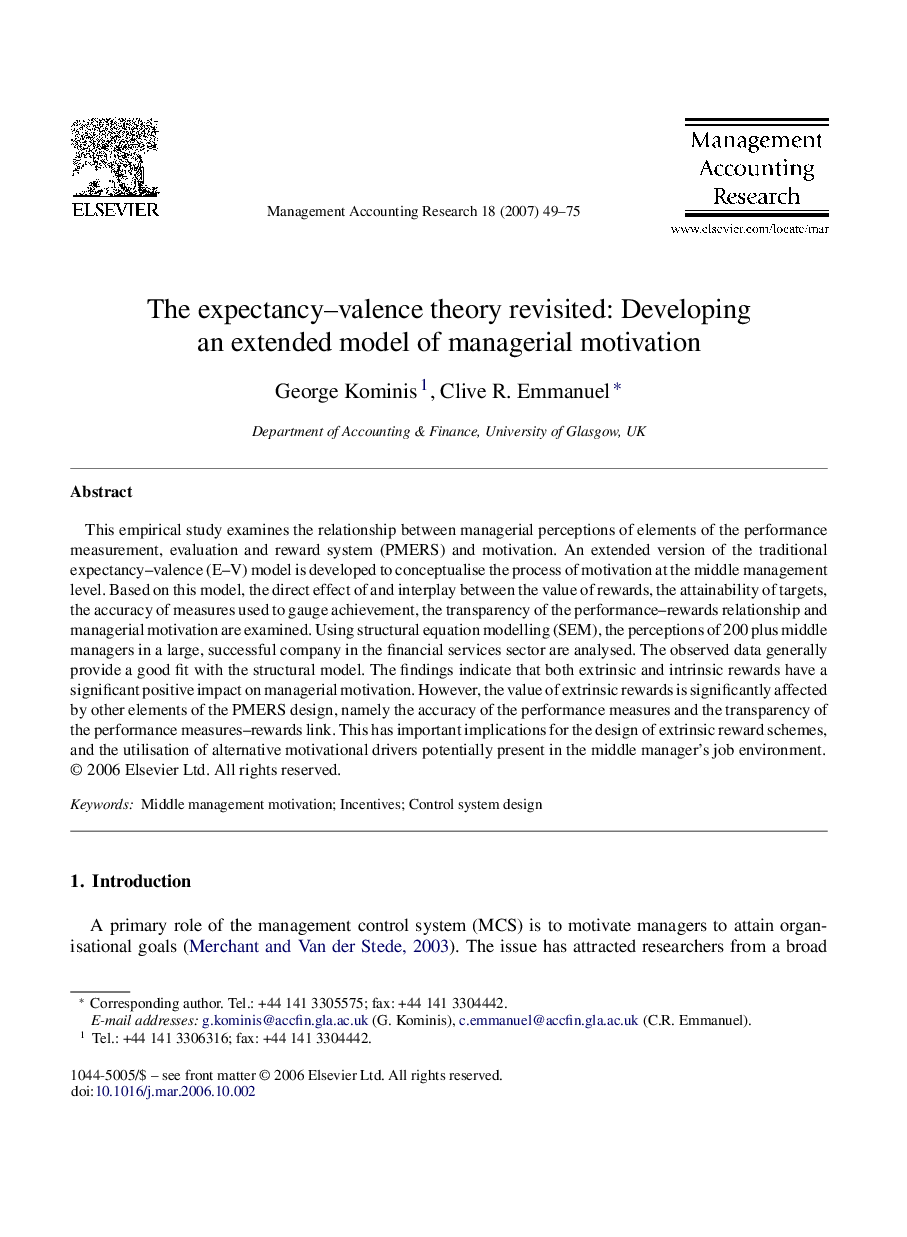| Article ID | Journal | Published Year | Pages | File Type |
|---|---|---|---|---|
| 1002945 | Management Accounting Research | 2007 | 27 Pages |
This empirical study examines the relationship between managerial perceptions of elements of the performance measurement, evaluation and reward system (PMERS) and motivation. An extended version of the traditional expectancy–valence (E–V) model is developed to conceptualise the process of motivation at the middle management level. Based on this model, the direct effect of and interplay between the value of rewards, the attainability of targets, the accuracy of measures used to gauge achievement, the transparency of the performance–rewards relationship and managerial motivation are examined. Using structural equation modelling (SEM), the perceptions of 200 plus middle managers in a large, successful company in the financial services sector are analysed. The observed data generally provide a good fit with the structural model. The findings indicate that both extrinsic and intrinsic rewards have a significant positive impact on managerial motivation. However, the value of extrinsic rewards is significantly affected by other elements of the PMERS design, namely the accuracy of the performance measures and the transparency of the performance measures–rewards link. This has important implications for the design of extrinsic reward schemes, and the utilisation of alternative motivational drivers potentially present in the middle manager's job environment.
